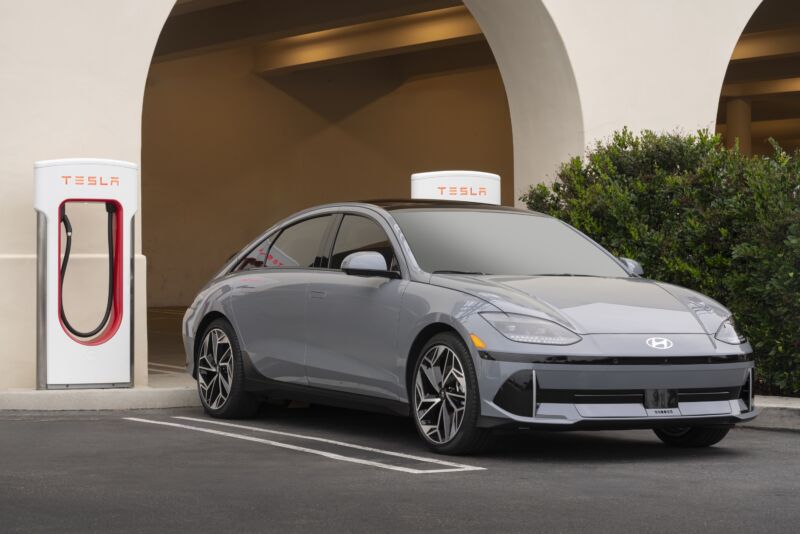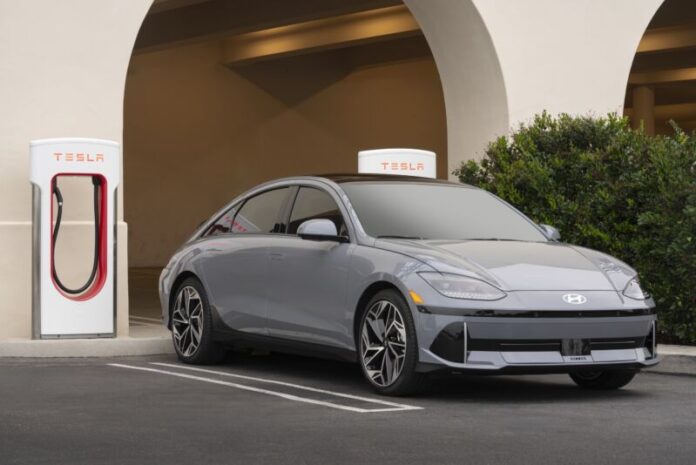
Enlarge (credit: Hyundai)
On Thursday morning, Hyundai announced that it's the latest automaker to adopt the North American Charging Standard for its battery electric vehicles. Developed by Tesla, NACS was opened up late last year and, since this May, has seen a flurry of automakers pledge to drop the existing Combined Charging Standard plug for the smaller, lighter NACS alternative, together with deals negotiating access to Tesla's robust Supercharger network in the process.
Ford went first, and all the subsequent announcements followed the same pattern: native NACS ports built into new EVs from 2025, with a CCS-NACS adapter made available in 2024 to allow those other brands' EVs to charge at Supercharger stations.
Today's timeline is slightly different, just to make sure we're paying attention. Hyundai says that it's going to start building NACS ports (instead of CCS1) into "all-new or refreshed Hyundai EVs" for the US market in Q4 2024, with Canadian EVs following suit in the first half of 2025.
Read 4 remaining paragraphs | Comments
Ars Technica - All contentContinue reading/original-link]




